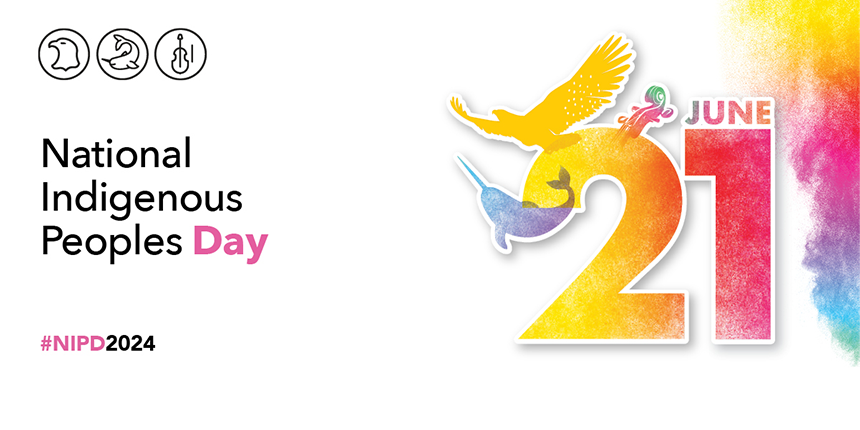

In celebration and recognition of National Indigenous Peoples Day on June 21, we encourage you to explore the Canadian Engineering Qualifications Board’s (CEQB) Guideline on Indigenous Consultation and Engagement, published in 2023.
As we take time to learn and reflect on the history, culture, and accomplishments of Indigenous Peoples, it is an opportunity think about ways to improve Indigenous access to engineering and engineering outcomes in Indigenous communities. One year since the guideline has been published, we want to share some reflections and highlights.
The Guideline on Indigenous Consultation and Engagement was created to support effective, meaningful practices around engagement with Indigenous communities on engineering work. It covers key considerations for effective consultation: Societal and cultural factors (such as Truth and Reconciliation and The United Nations Declaration on the Rights of Indigenous Peoples (UNDRIP), pre-engagement learning, individual and organizational preparation, principles for engagement, protocols and respectful engagement, and how to create an engagement plan.
“The process of creating this guideline was different than what we’ve experienced with other CEQB guidelines,” says Marcie Cochrane, P.Eng., MBA, CEQB, Member-at-Large Representative. “A different approach to consultation was taken and the guideline reflects this intentional approach and the multitude of perspectives that was sought.”
Having the work developed and led by people with lived experience of an Indigenous world view was a critical element to this work. Consultations, gatherings, and the writing of the guideline itself were guided by Gayle Frank and Danilo Caron from Urban Systems. From the guidance and insight received from Elder Norman Meade during the gatherings to the perspectives shared by Engineers Canada’s Indigenous Advisory Committee (IAC) – the guideline is a culmination of views and perspectives from various key groups.
“When we don’t know something, it’s okay to ask for help. This work is a product of a significant amount of collaboration,” says Samer Inchasi, MBA, P.Eng., PMP, FEC, CEQB, Vice-Chair. “It was critical that we understood the depth of the challenges Indigenous peoples face so that we could provide appropriate guidance to get to a place where Indigenous communities are always considered and included in engineering work.”
It is the hope of the CEQB that this guideline will provide a meaningful and practical tool that engineers and engineering firms can employ when working with Indigenous communities to develop engineering projects. On that note, there has been an increase in awareness of the guideline in the past year, including the webinar page, one of the most viewed webpages on Engineers Canda’s website in 2023.
“Working with the Association of Consulting Engineers Companies of BC, I’ve seen the guideline get picked up by our Equity, Diversity, and Inclusion Committee who are in the process of creating a resource with the working title, “Indigenous Relations Action Plan”. It is scheduled to be published in September 2024. Consulting engineers are aware of and using the guideline to support their practice,” says Cochrane.
There has also been an appetite for the guideline in university programs. “Details on the guideline were presented at the Advancing Indigenous People in STEM (AISES) National Conference, where we learned that many professionals, students, and educators are aware that there is a need for more mindful engagement and Indigenous programs in engineering,” says Inchasi.
Though there have been strides over the past year, there is a strong sense at Engineers Canada that this is only the beginning. The guideline is intended to be a living document. “It’s not something that will be kept on the shelf, the process will continue. We’ve always kept an eye to that.” Says Inchasi. “As you read through it, I encourage you to provide feedback, ask questions. There could be things we didn't see.”
As you explore the guideline, Cochrane offers the following advice: "recognize that this process is a journey and if you're feeling overwhelmed you don't need to do it all at once. Start where you are. Take it one step at a time and share areas of improvement with us.”
“If you’re reading the guideline for the first time, I would advise that you do so with a change-maker mindset,” says Connor Scheu, P.Eng., member of Engineers Canada’s Indigenous Advisory Committee. “Consider who you could share it with in your organization to create an engagement transformation, and which groups outside of your organization could be allies. Parts of the guideline are aspirational, but there is a community out there for those looking to improve how engineers and their companies engage with Indigenous peoples,” says Scheu.
If you do have stories to share about how you’ve used the guideline in your work, or if you would like to discuss ways it could be shared in your setting, we would love to hear them. Please feel free to reach out to Ryan Melsom, Manager, Qualifications at ryan.melsom@engineerscanada.ca.


